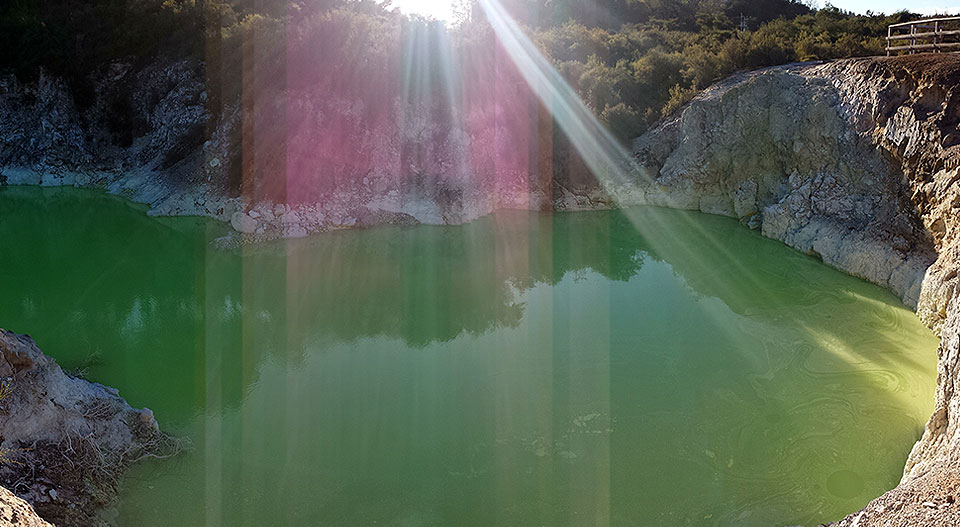
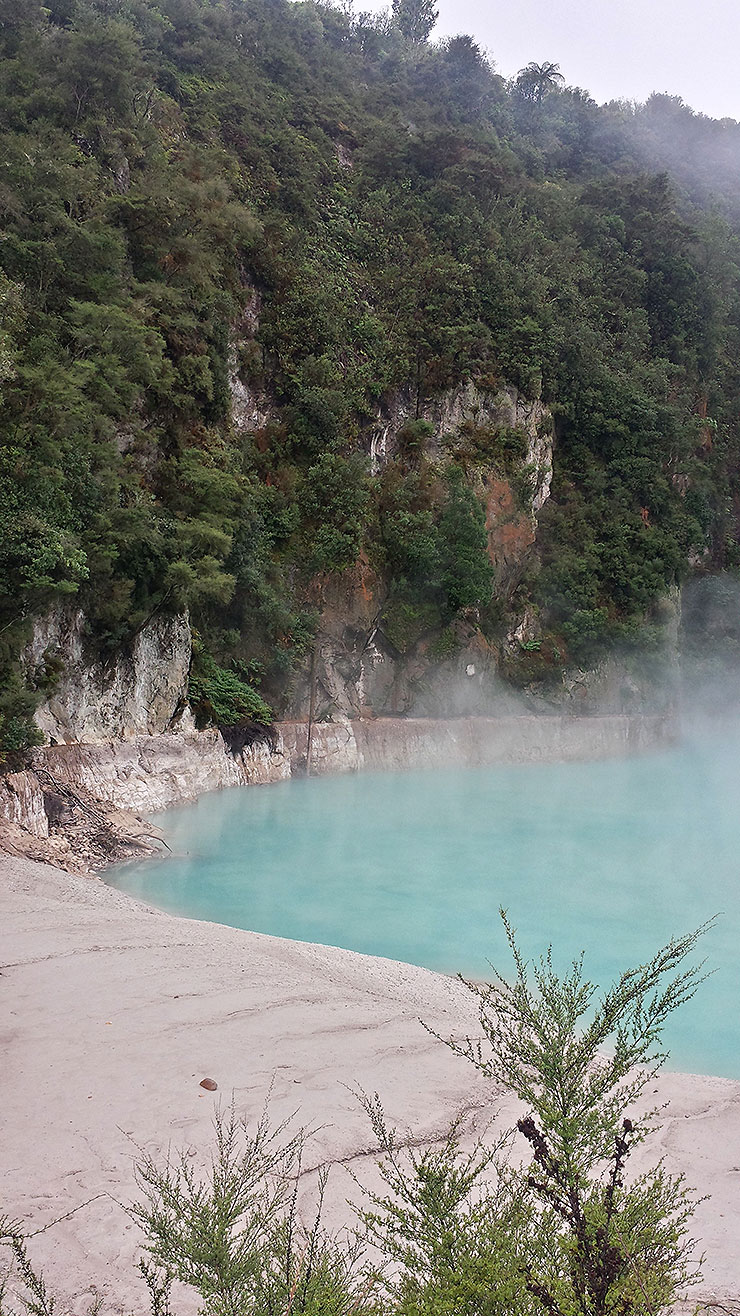
New Zealand rests above an active fault line where two fragments of the earth’s surface collide. In the south island the earth is forced upward, creating the beautiful Southern Alps, and in the north island one of the pieces is pushed under the other resulting in a great deal of geothermal and volcanic activity. On my north island trip I went to three major geothermal wonders that ranged from geysers, boiling mud pools, to craters.
All of these sites are so colorful and bright that (once again) my photos look Photoshopped or edited because they are almost too good to be true. The first place I went to was called the Waimangu Volcanic Valley in Rotorua, the geothermal capital of the world. The entire town of Rotorua reeks of rotten eggs from all the sulfur deposits in the hot pools, craters and geysers. The residents of Rotorua are used to it, however it took me a few days to get used to, and by then I was already leaving the city. The Waimangu Volcanic Valley was a 90-minute hike through a park surrounded by craters, hot streams and boiling lakes. The Haumi Stream flows through the entire park and is steaming from all of the heat being released from the crust. It is lit up with many bright colors (green, blue, yellow) that all are different mineral deposits. My favorite site here was the Inferno Crater not only because it is beautiful, but it has some really interesting history as well as a unique hydrothermal system. It runs on a 38-day cycle where the water level fluctuates between 0 and 26 feet deep; when the water level decreases it fills up a neighboring lake called Frying Pan Lake, and vice versa when water leaves Frying Pan Lake it then goes into the Inferno Crater. The color of the water changes color during the cycle and it ranges from a bright blue to a lime green.
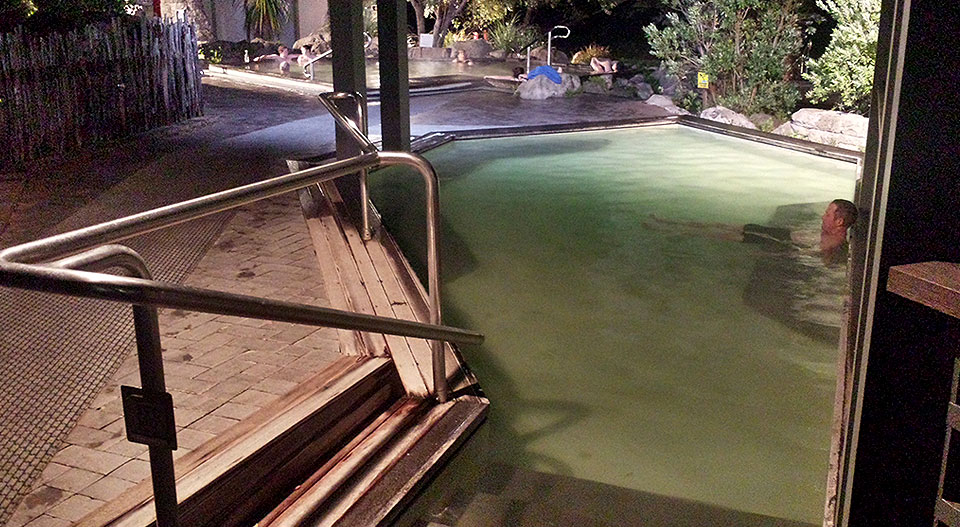
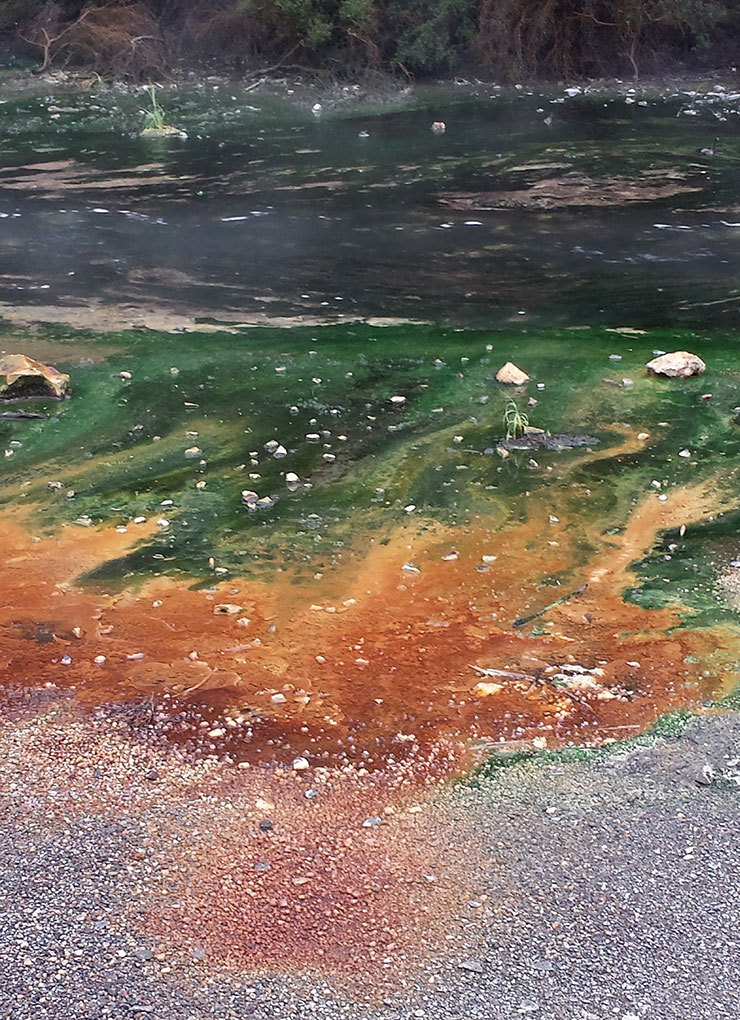
Many places in New Zealand, especially the north island, have outdoor spas with sulfur hot pools. Sulfur has loads of therapeutic effects on the body and is recommended for arthritis, skin diseases and acne, body aches and more. Throughout my entire time in NZ I went to around five of these spas and they really are wondrous. Typically there are between three and eight different pools ranging in temperature and mineral content. Some of them even have a pool you can swim laps in! Since these pools are natural and filled with many nutrients, the water is normally green; for the brave folk there are sometimes mud baths, but I never tried one of those. People from all over the world come to the north island of New Zealand for the sulfur hot pool therapy.
Next we headed to the Waiotapu Thermal Wonderland! But before Thermal Wonderland we stopped to see the Lady Knox Geyser which erupts to heights up to 20 meters high. This geyser goes off every day at 10:15 a.m. but it is because the park employees throw an environmentally friendly soap into the geyser, breaking the surface tension between the hot and cold water. When the drastically different temperatures are mixed with the soap, it causes the geyser to erupt. This was actually discovered by a New Zealand prisoner who was washing his hands in the warm water around the geyser and accidentally dropped his bar of soap into the geyser, causing it to blast boiling hot water into the air.
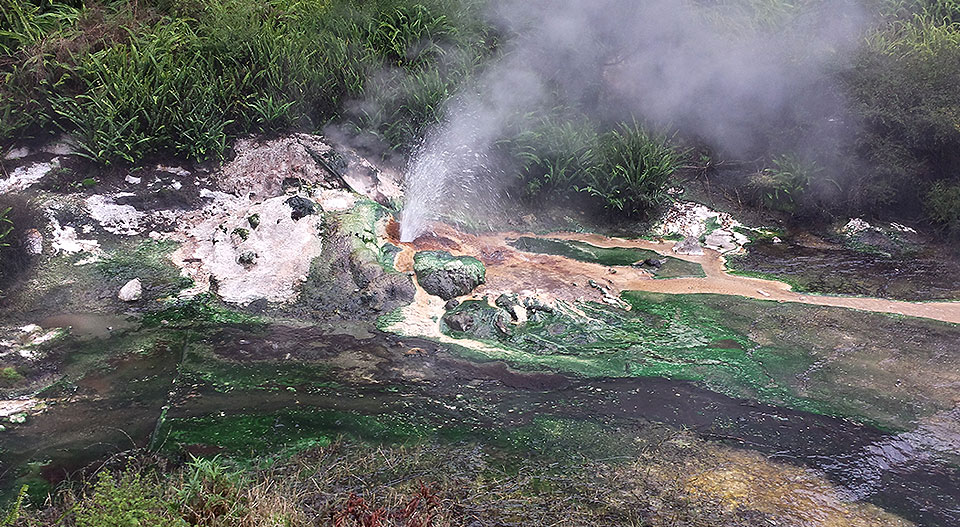

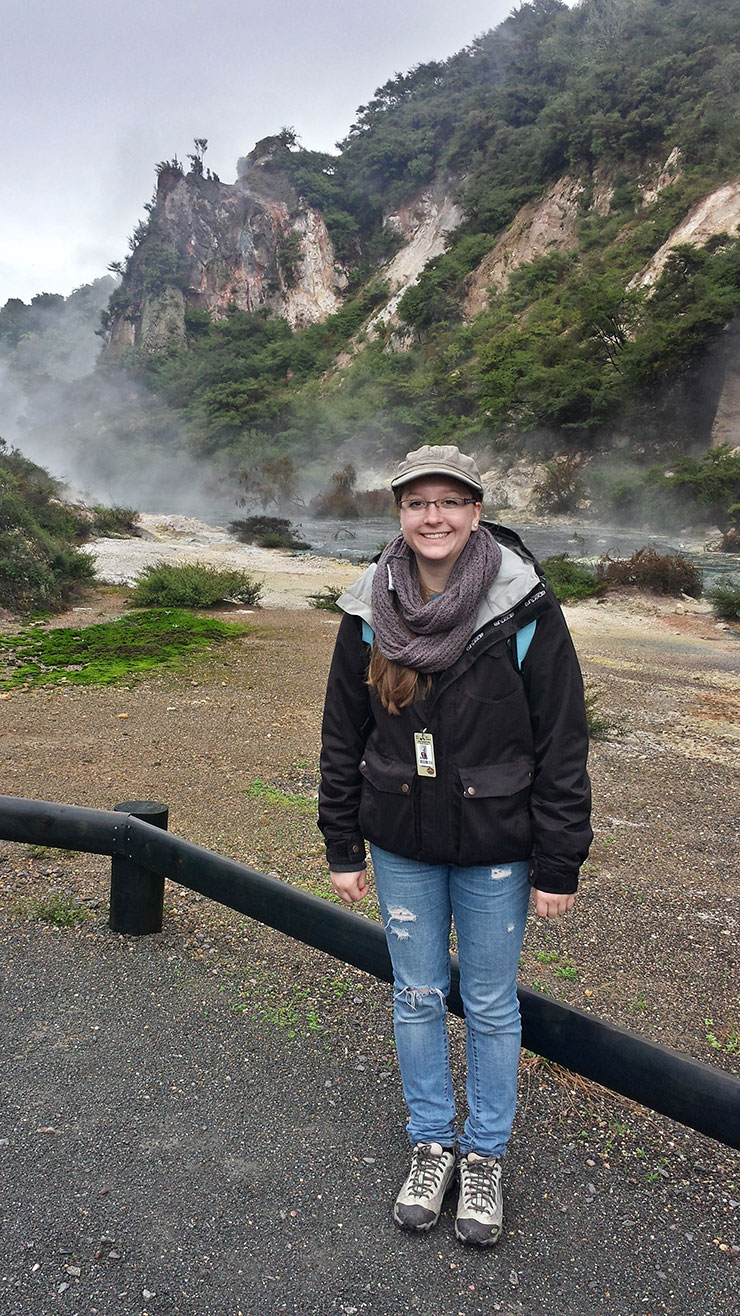
Waiotapu is also full of geothermal activity, so again we did a tour to get to see everything the park had in store. Here there were also many craters, mud pools and sulfur caves. Some of the lakes there are a radiant green which give them the name Emerald Lakes; they are truly magnificent and full of history! New Zealand converts the geothermal heat from the hot lakes and pools into energy and actually makes up 13% of the country’s electricity and is their most reliable source of renewable energy.
We also got to see a volcano, but it has been inactive for over seventy years. The last time it erupted it took the lives of a family of tourists that were not following the trail marks and ended up being in the wrong place at the wrong time. It is still fascinating to think that all of the craters, hot pools and caves would not be there without the life of the volcano, and I also enjoyed spotting all of the wildlife around the area that thrive on the warmth from the underground geothermal activity. Rotorua really was one of New Zealand’s most colorful cities and was a great thing to see before I left!
-Emily
Emily Jakusz is a senior at the University of Wisconsin-Stevens Point majoring in health sciences-health care administration. She is blogging about her study abroad experience in Australia and New Zealand.
